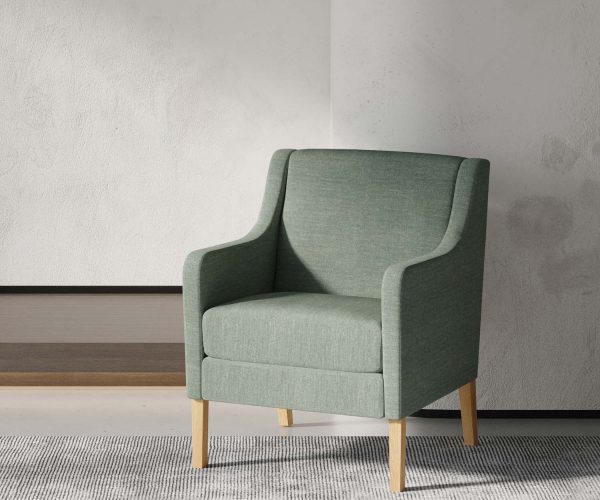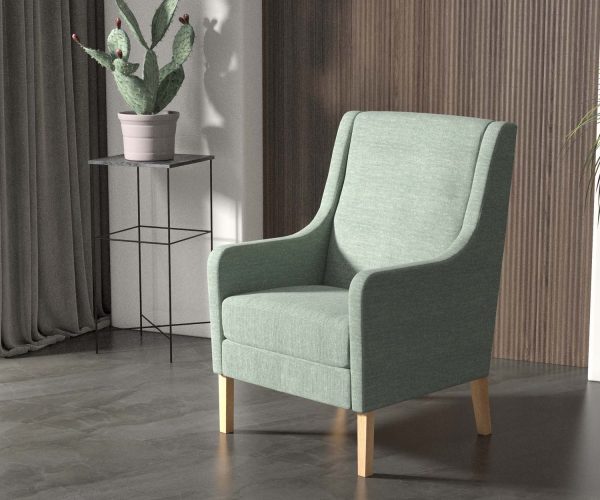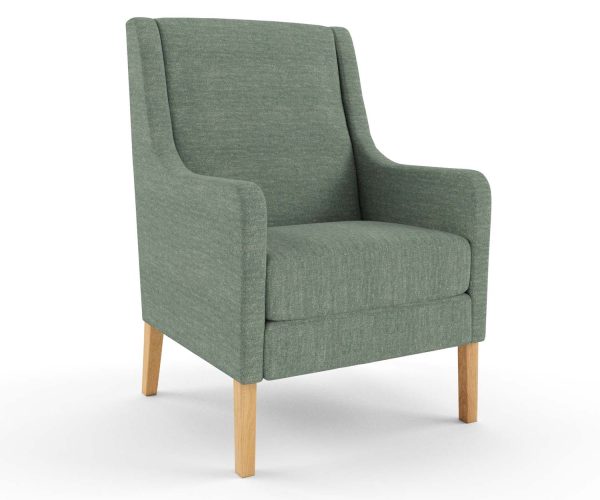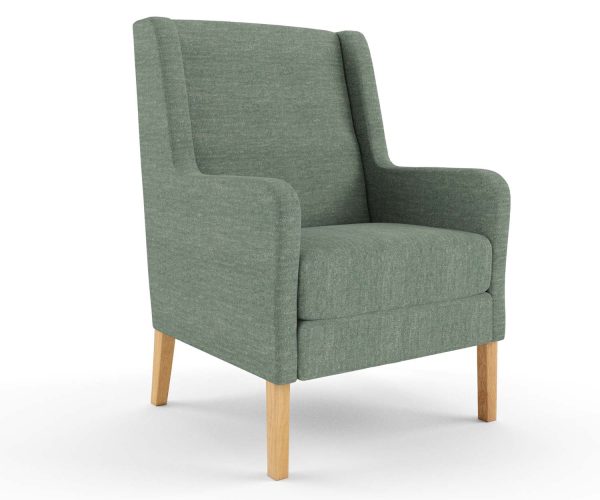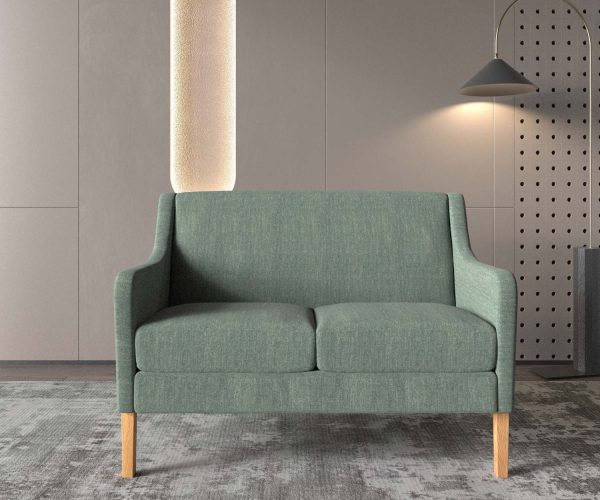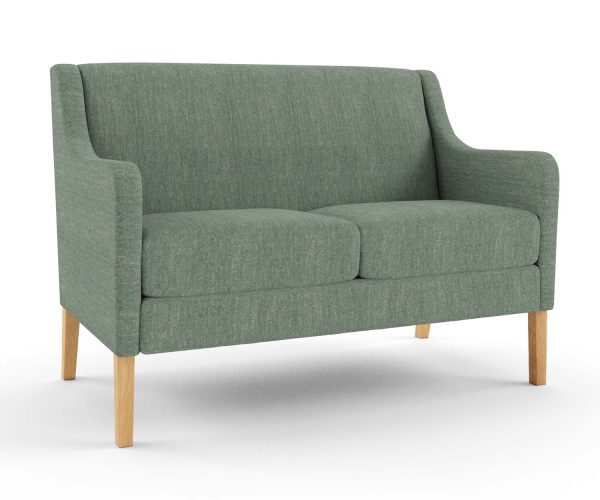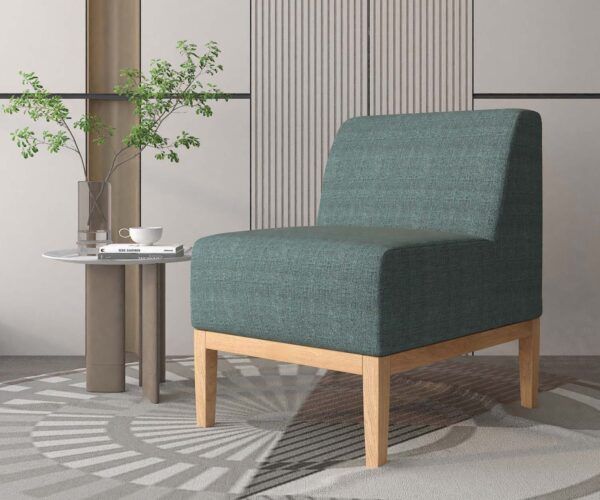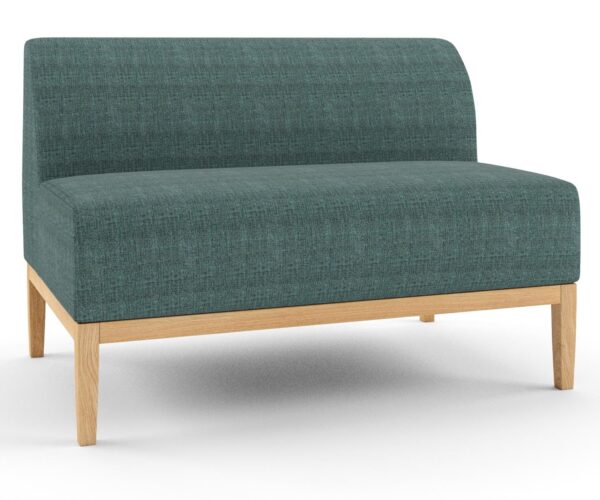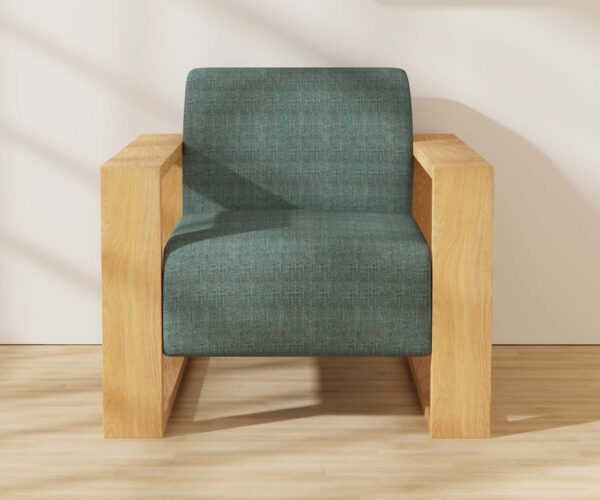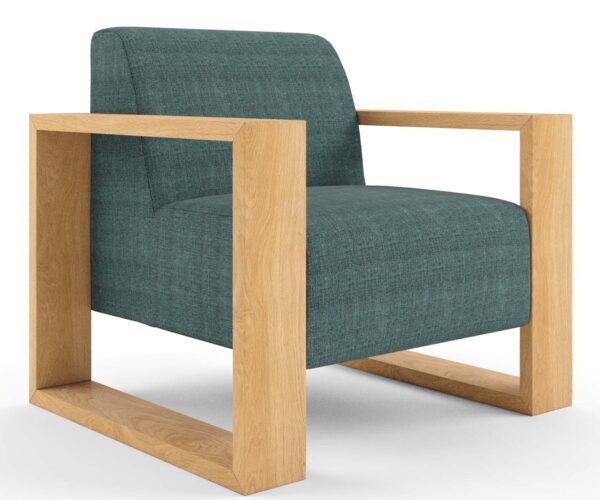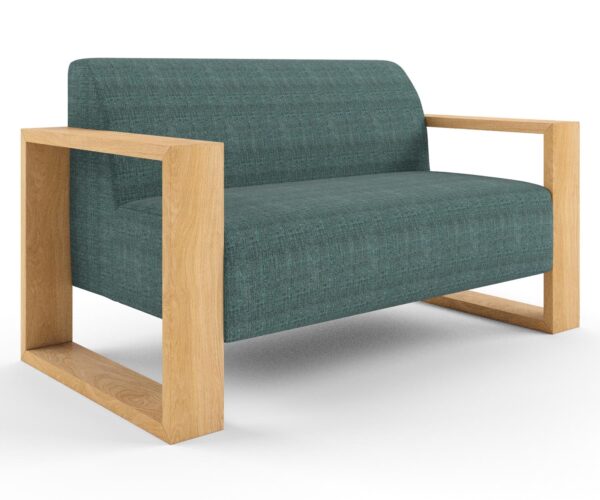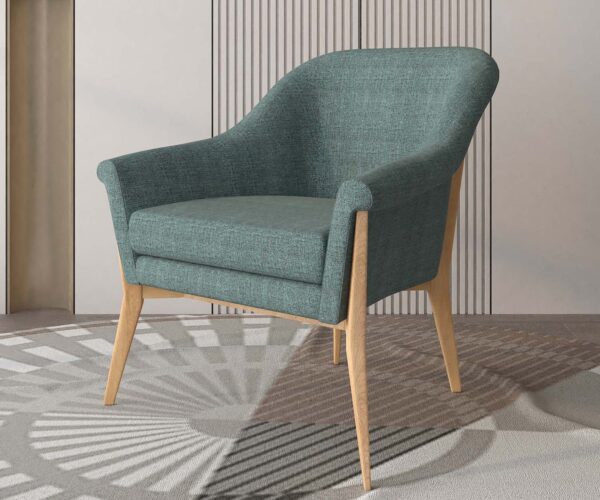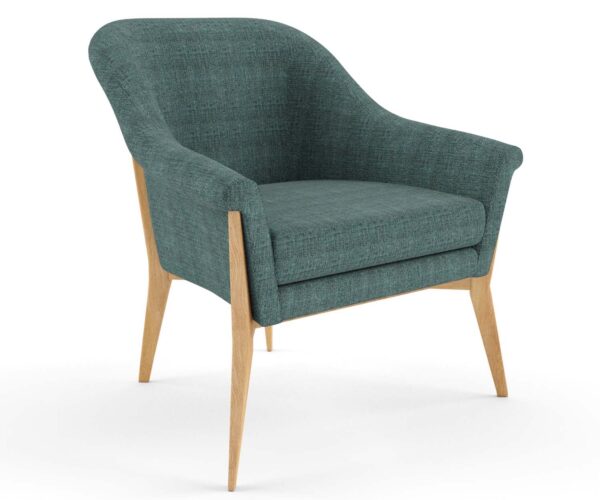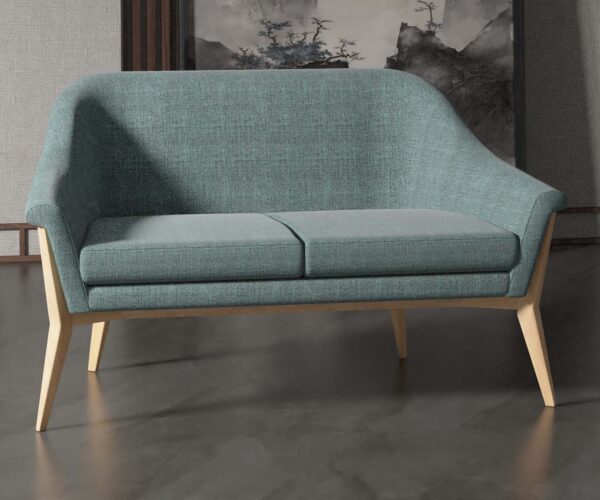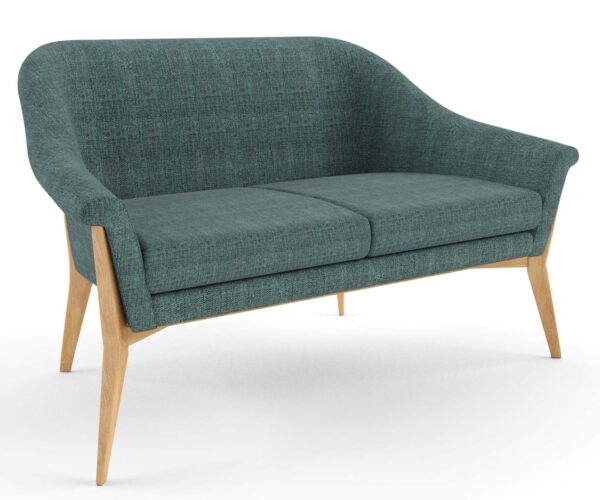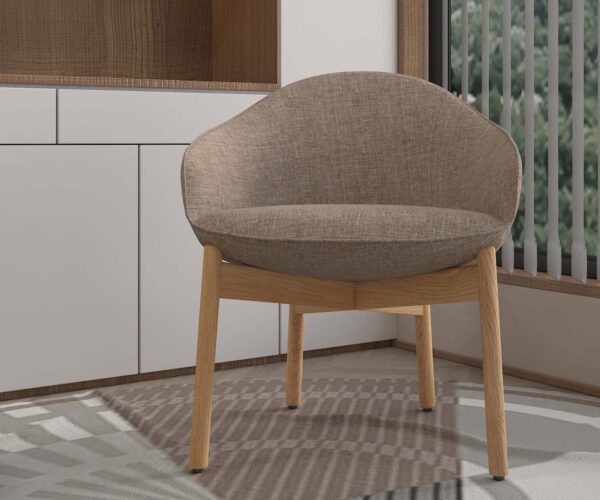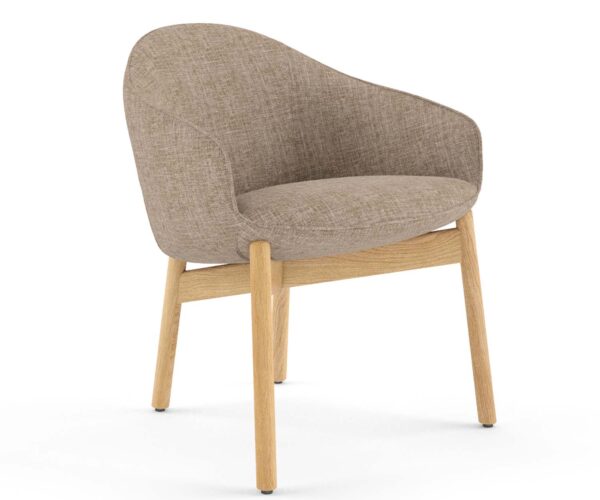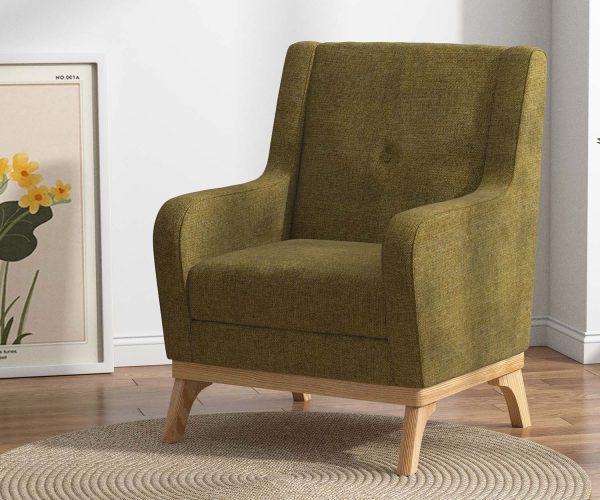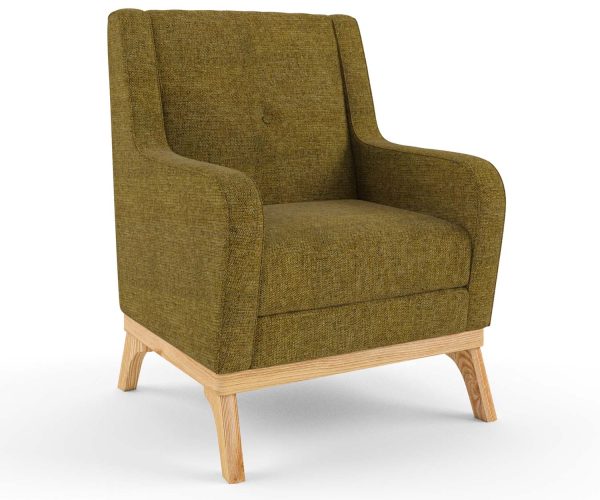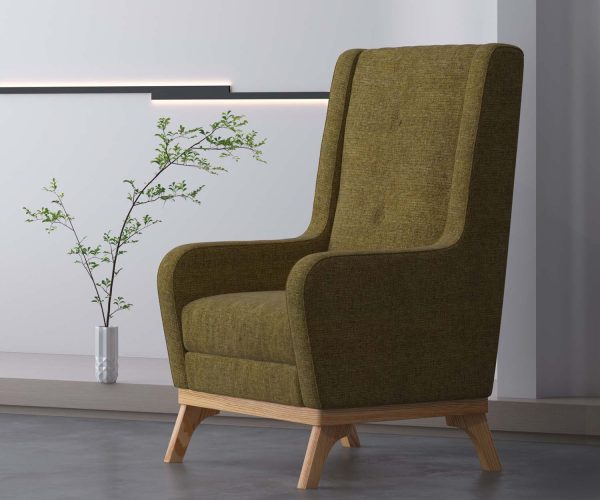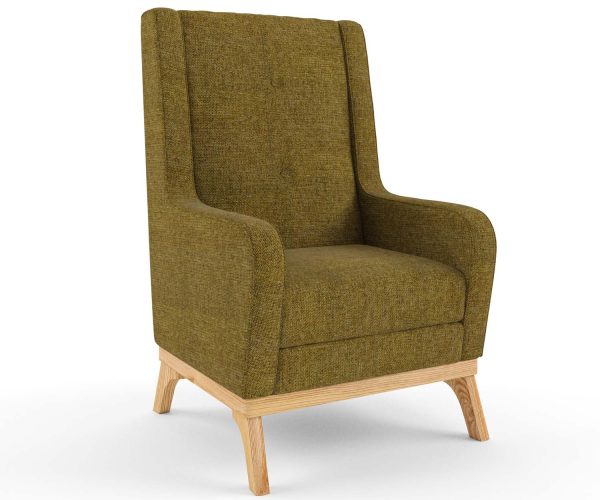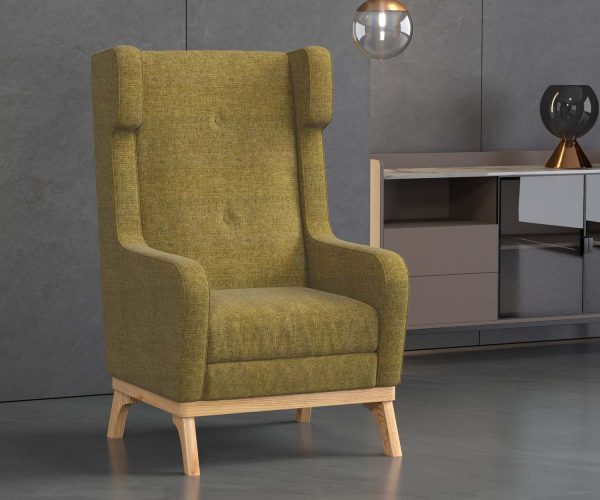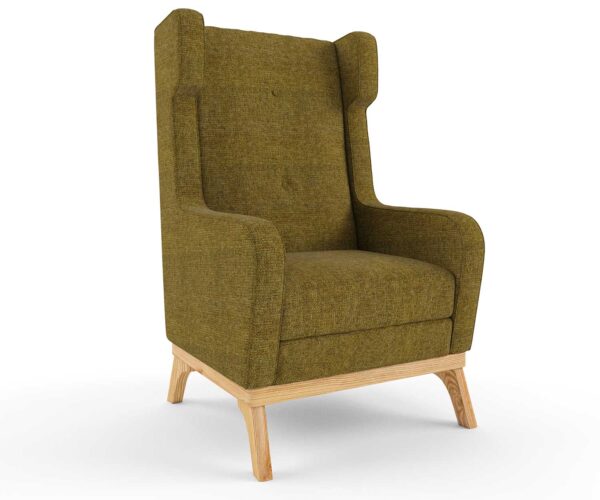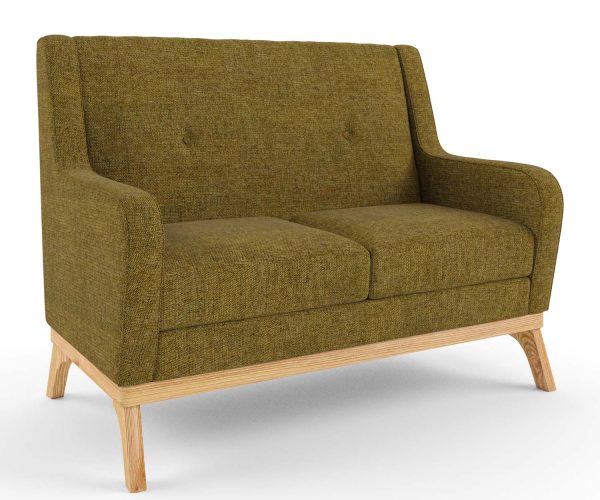Furniture Selection for Palliative Care Rooms: 12 Expert Tips
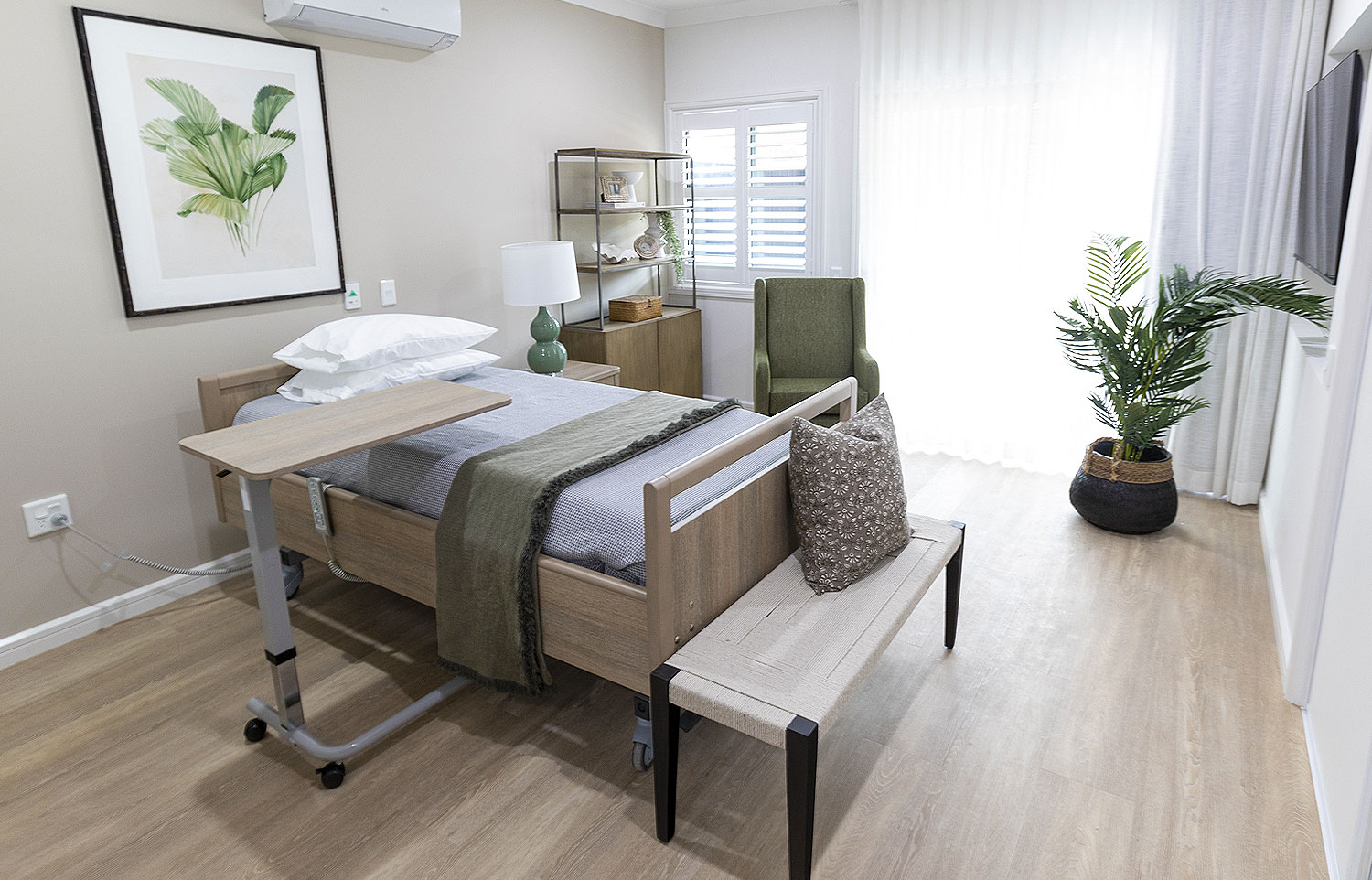
Designing a palliative care room involves creating a space that prioritises comfort, dignity, and functionality. Furniture plays a critical role in achieving these goals. For procurement professionals tasked with selecting the right pieces, it’s essential to consider various factors to ensure the furniture meets the needs of both patients and staff.
Here are 12 expert tips for selecting furniture for palliative care rooms:
1. Prioritise Comfort and Support
Comfort is paramount in palliative care settings. Opt for furniture that offers excellent support and cushioning. Chairs and beds should be ergonomically designed to provide optimal support for patients with varying levels of mobility and comfort needs. Adjustable features, such as reclining options and height adjustments, can significantly enhance patient comfort.
Quick tips for prioritising comfort and safety for furniture in palliative care settings:
- Choose ergonomic designs with adjustable features like reclining backs and height adjustments to cater to varying patient needs.
- Select high-density foam or memory foam cushioning for better support and comfort.
- Test furniture for pressure distribution to ensure it reduces the risk of pressure sores and provides even support.
2. Ensure Durability and Ease of Maintenance
Furniture in palliative care rooms needs to withstand daily use while being easy to clean and maintain. Choose materials that are durable and resistant to stains, moisture, and wear. Fabric options like vinyl or treated upholstery can offer both durability and ease of cleaning, which is crucial for maintaining hygiene standards.
Quick tips for ensuring durability and easy of maintenance for furniture in palliative care rooms:
- Opt for stain-resistant fabrics or vinyl that are easy to wipe clean and resistant to moisture.
- Choose robust construction materials like solid wood or metal frames that can withstand frequent use.
- Check for easy disassembly options for maintenance and cleaning, ensuring that parts can be easily replaced or repaired.
3. Select Non-Clinical, Homely Designs
Creating a comforting environment often involves choosing furniture that feels more like home than a clinical setting. Opt for designs that have a warm, inviting appearance. Soft textures, neutral colours, and stylish, yet practical furniture can help make the space feel more personal and less institutional.
Quick tips for selecting non-clinical, homely designs for palliative care furniture:
- Choose furniture with soft, warm finishes and textures that evoke a homely atmosphere rather than a clinical feel.
- Incorporate designs with rounded edges and soft lines to create a more inviting environment.
- Select colours and patterns that are subtle and soothing, avoiding stark or institutional designs.
4. Focus on Safety
Safety is a critical concern in palliative care environments. Ensure that furniture is designed with rounded edges to prevent injury, and that it is stable and sturdy. Non-slip bases on chairs and beds are essential to prevent accidents. Additionally, consider furniture that is easy for caregivers to adjust or manoeuvre, reducing the risk of strain or injury.
Quick tips for focusing on safety for palliative care furniture:
- Ensure furniture has stable bases and low centre of gravity to prevent tipping and accidents.
- Check for rounded edges and smooth surfaces to reduce the risk of injury.
- Include non-slip features on the base of chairs and beds to prevent slips and falls.
5. Incorporate Flexibility and Adaptability
Palliative care rooms should be adaptable to various needs. Choose furniture that can be easily rearranged or adjusted to accommodate different activities and patient requirements. Modular furniture or pieces with multiple functions can provide added flexibility.
Quick tips for incorporating flexibility and adaptability in choosing furniture for palliative care rooms:
- Choose modular furniture that can be rearranged or reconfigured as needed.
- Select pieces with adjustable components like height or angle to accommodate different patient needs.
- Look for multifunctional furniture such as beds with built-in storage or chairs that convert into beds.
6. Consider Patient and Family Comfort
Furniture should cater to both patient and family needs. Include comfortable seating options for family members who may spend long hours in the room. Consider the inclusion of features such as side tables and adjustable lighting to support family members during their visits.
Quick tips for considering patient and family comfort in furniture choice for palliative care:
- Provide comfortable seating options for family members, with features like plush cushions and supportive backs.
- Include side tables and adjustable lighting to enhance family comfort and functionality during visits.
- Ensure easy access to essential items such as personal belongings or refreshments within reach of family members.
7. Use Colour Strategically
Colour can significantly impact the mood and feel of a room. Opt for soothing, neutral tones that promote a calm and peaceful environment. Colours like soft blues, greens, and beiges can create a serene atmosphere, while avoiding overly bright or harsh colours that might be unsettling.
Quick tips for using colour strategically for furniture in palliative care:
- Opt for calming, neutral tones like soft blues, greens, or beiges that promote relaxation.
- Avoid bright or harsh colours that can be overstimulating or unsettling.
- Use colour in combination with natural light to create a serene and inviting environment.
8. Ensure Accessibility
Furniture should be designed to be accessible for all users, including those with limited mobility. Choose pieces that are easy to get in and out of, and ensure that there are ample clearances for wheelchair access. Features like armrests and supportive backrests can also aid in accessibility.
Quick tips for ensuring furniture is accessible for all users in palliative care settings:
- Choose furniture with adjustable heights to accommodate different levels of mobility.
- Ensure clearances for wheelchair access and easy manoeuvrability around the room.
- Include features like armrests and supportive backrests to aid patients in sitting and standing.
9. Integrate Technology Thoughtfully
Incorporate technology that enhances patient comfort and convenience. For example, adjustable beds with built-in controls or chairs with integrated USB charging ports can add significant value. Ensure that any technological features are easy to use and maintain.
Quick tips for integrating technology with furniture in palliative care settings:
- Select furniture with built-in controls or features such as adjustable beds with easy-to-use mechanisms.
- Incorporate USB charging ports or integrated technology that enhances patient convenience.
- Ensure technology is user-friendly and easy to maintain, with clear instructions for use.
10. Foster a Homely Environment with Personal Touches
Personal touches can make a significant difference in palliative care rooms. Consider incorporating furniture that allows for the display of personal items such as photographs or mementos. This helps create a more personalised and comforting environment.
Quick tips for using furniture to foster a homely environment:
- Choose furniture with surfaces or compartments that allow for personal items like photographs or mementos.
- Incorporate flexible shelving or display areas for family photos or personal belongings.
- Use furniture that supports customisation or personalisation to reflect the patient’s preferences.
11. Consult with Care Providers
Engage with healthcare professionals who work directly with patients to understand their needs and preferences. Their insights can provide valuable guidance on selecting furniture that best supports patient care and staff efficiency.
Quick tips for consulting with care providers about furniture in palliative care settings:
- Hold consultations with healthcare professionals to gather insights on furniture needs and preferences.
- Conduct surveys or feedback sessions with staff to understand their requirements for functionality and ease of use.
- Consider input from caregivers who interact with patients daily to ensure furniture meets practical needs.
12. Stay Within Budget
While prioritising quality and comfort, it’s important to stay within budget constraints. Look for furniture that offers the best value for money without compromising on essential features. Seek out suppliers who offer warranties or guarantees to ensure long-term satisfaction with your investment.
Quick tips for staying on budget with palliative care furniture:
- Research multiple suppliers to compare prices and find the best value for money.
- Look for bulk purchasing options or discounts for larger orders to maximise budget efficiency.
- Seek out furniture with warranties or guarantees to ensure long-term value and minimise future costs.
Selecting the right furniture for palliative care rooms requires a thoughtful approach that balances comfort, functionality, and aesthetics. By following these expert tips, procurement managers can make informed decisions that enhance the quality of care and create a supportive environment for patients and their families. Investing in well-designed, durable, and adaptable furniture not only improves patient experience but also supports the overall goals of palliative care.
Comfortable Armchairs for Palliative Care Rooms
Explore our range of comfortable armchairs designed for palliative care rooms, offering exceptional support and a soothing environment for both patients and families.
More News
Furniture Selection for Palliative Care Rooms: 12 Expert Tips

Designing a palliative care room involves creating a space that prioritises comfort, dignity, and functionality. Furniture plays a critical role in achieving these goals. For procurement professionals tasked with selecting the right pieces, it’s essential to consider various factors to ensure the furniture meets the needs of both patients and staff.
Here are 12 expert tips for selecting furniture for palliative care rooms:
1. Prioritise Comfort and Support
Comfort is paramount in palliative care settings. Opt for furniture that offers excellent support and cushioning. Chairs and beds should be ergonomically designed to provide optimal support for patients with varying levels of mobility and comfort needs. Adjustable features, such as reclining options and height adjustments, can significantly enhance patient comfort.
Quick tips for prioritising comfort and safety for furniture in palliative care settings:
- Choose ergonomic designs with adjustable features like reclining backs and height adjustments to cater to varying patient needs.
- Select high-density foam or memory foam cushioning for better support and comfort.
- Test furniture for pressure distribution to ensure it reduces the risk of pressure sores and provides even support.
2. Ensure Durability and Ease of Maintenance
Furniture in palliative care rooms needs to withstand daily use while being easy to clean and maintain. Choose materials that are durable and resistant to stains, moisture, and wear. Fabric options like vinyl or treated upholstery can offer both durability and ease of cleaning, which is crucial for maintaining hygiene standards.
Quick tips for ensuring durability and easy of maintenance for furniture in palliative care rooms:
- Opt for stain-resistant fabrics or vinyl that are easy to wipe clean and resistant to moisture.
- Choose robust construction materials like solid wood or metal frames that can withstand frequent use.
- Check for easy disassembly options for maintenance and cleaning, ensuring that parts can be easily replaced or repaired.
3. Select Non-Clinical, Homely Designs
Creating a comforting environment often involves choosing furniture that feels more like home than a clinical setting. Opt for designs that have a warm, inviting appearance. Soft textures, neutral colours, and stylish, yet practical furniture can help make the space feel more personal and less institutional.
Quick tips for selecting non-clinical, homely designs for palliative care furniture:
- Choose furniture with soft, warm finishes and textures that evoke a homely atmosphere rather than a clinical feel.
- Incorporate designs with rounded edges and soft lines to create a more inviting environment.
- Select colours and patterns that are subtle and soothing, avoiding stark or institutional designs.
4. Focus on Safety
Safety is a critical concern in palliative care environments. Ensure that furniture is designed with rounded edges to prevent injury, and that it is stable and sturdy. Non-slip bases on chairs and beds are essential to prevent accidents. Additionally, consider furniture that is easy for caregivers to adjust or manoeuvre, reducing the risk of strain or injury.
Quick tips for focusing on safety for palliative care furniture:
- Ensure furniture has stable bases and low centre of gravity to prevent tipping and accidents.
- Check for rounded edges and smooth surfaces to reduce the risk of injury.
- Include non-slip features on the base of chairs and beds to prevent slips and falls.
5. Incorporate Flexibility and Adaptability
Palliative care rooms should be adaptable to various needs. Choose furniture that can be easily rearranged or adjusted to accommodate different activities and patient requirements. Modular furniture or pieces with multiple functions can provide added flexibility.
Quick tips for incorporating flexibility and adaptability in choosing furniture for palliative care rooms:
- Choose modular furniture that can be rearranged or reconfigured as needed.
- Select pieces with adjustable components like height or angle to accommodate different patient needs.
- Look for multifunctional furniture such as beds with built-in storage or chairs that convert into beds.
6. Consider Patient and Family Comfort
Furniture should cater to both patient and family needs. Include comfortable seating options for family members who may spend long hours in the room. Consider the inclusion of features such as side tables and adjustable lighting to support family members during their visits.
Quick tips for considering patient and family comfort in furniture choice for palliative care:
- Provide comfortable seating options for family members, with features like plush cushions and supportive backs.
- Include side tables and adjustable lighting to enhance family comfort and functionality during visits.
- Ensure easy access to essential items such as personal belongings or refreshments within reach of family members.
7. Use Colour Strategically
Colour can significantly impact the mood and feel of a room. Opt for soothing, neutral tones that promote a calm and peaceful environment. Colours like soft blues, greens, and beiges can create a serene atmosphere, while avoiding overly bright or harsh colours that might be unsettling.
Quick tips for using colour strategically for furniture in palliative care:
- Opt for calming, neutral tones like soft blues, greens, or beiges that promote relaxation.
- Avoid bright or harsh colours that can be overstimulating or unsettling.
- Use colour in combination with natural light to create a serene and inviting environment.
8. Ensure Accessibility
Furniture should be designed to be accessible for all users, including those with limited mobility. Choose pieces that are easy to get in and out of, and ensure that there are ample clearances for wheelchair access. Features like armrests and supportive backrests can also aid in accessibility.
Quick tips for ensuring furniture is accessible for all users in palliative care settings:
- Choose furniture with adjustable heights to accommodate different levels of mobility.
- Ensure clearances for wheelchair access and easy manoeuvrability around the room.
- Include features like armrests and supportive backrests to aid patients in sitting and standing.
9. Integrate Technology Thoughtfully
Incorporate technology that enhances patient comfort and convenience. For example, adjustable beds with built-in controls or chairs with integrated USB charging ports can add significant value. Ensure that any technological features are easy to use and maintain.
Quick tips for integrating technology with furniture in palliative care settings:
- Select furniture with built-in controls or features such as adjustable beds with easy-to-use mechanisms.
- Incorporate USB charging ports or integrated technology that enhances patient convenience.
- Ensure technology is user-friendly and easy to maintain, with clear instructions for use.
10. Foster a Homely Environment with Personal Touches
Personal touches can make a significant difference in palliative care rooms. Consider incorporating furniture that allows for the display of personal items such as photographs or mementos. This helps create a more personalised and comforting environment.
Quick tips for using furniture to foster a homely environment:
- Choose furniture with surfaces or compartments that allow for personal items like photographs or mementos.
- Incorporate flexible shelving or display areas for family photos or personal belongings.
- Use furniture that supports customisation or personalisation to reflect the patient’s preferences.
11. Consult with Care Providers
Engage with healthcare professionals who work directly with patients to understand their needs and preferences. Their insights can provide valuable guidance on selecting furniture that best supports patient care and staff efficiency.
Quick tips for consulting with care providers about furniture in palliative care settings:
- Hold consultations with healthcare professionals to gather insights on furniture needs and preferences.
- Conduct surveys or feedback sessions with staff to understand their requirements for functionality and ease of use.
- Consider input from caregivers who interact with patients daily to ensure furniture meets practical needs.
12. Stay Within Budget
While prioritising quality and comfort, it’s important to stay within budget constraints. Look for furniture that offers the best value for money without compromising on essential features. Seek out suppliers who offer warranties or guarantees to ensure long-term satisfaction with your investment.
Quick tips for staying on budget with palliative care furniture:
- Research multiple suppliers to compare prices and find the best value for money.
- Look for bulk purchasing options or discounts for larger orders to maximise budget efficiency.
- Seek out furniture with warranties or guarantees to ensure long-term value and minimise future costs.
Selecting the right furniture for palliative care rooms requires a thoughtful approach that balances comfort, functionality, and aesthetics. By following these expert tips, procurement managers can make informed decisions that enhance the quality of care and create a supportive environment for patients and their families. Investing in well-designed, durable, and adaptable furniture not only improves patient experience but also supports the overall goals of palliative care.
Comfortable Armchairs for Palliative Care Rooms
Explore our range of comfortable armchairs designed for palliative care rooms, offering exceptional support and a soothing environment for both patients and families.
Commercial furniture by room
Based in Brisbane, we’re an Australian manufacturer of aged care furniture, retirement living furniture, hospital & healthcare furniture, hotel & accommodation furniture and student accommodation furniture. We also supply a range of commercial office furniture.
Discover the FHG Look Book: Your Source of Inspiration for Quality Australian-Made Commercial Furniture
- Quality Craftsmanship: See why we’ve been a trusted partner for over 25 years.
- Local Excellence: Learn how our Brisbane team ensures the highest standards.
- Inspiration and Ideas: Find innovative furniture solutions for any environment.
Don’t miss the opportunity to transform your commercial space with FHG’s expertly crafted furniture. Download the FHG Look Book today and start your journey towards exceptional design and quality.

